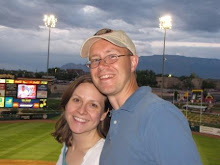As part of my new gig as department chair I am required to participate in a year-long training, a portion of which entails setting a series of goals for developing my leadership skills. As anyone who has known me for longer than a few minutes is aware, I despise this sort of thing--setting goals as part of a tightly-crafted system for self-improvement is a chief reason why I dropped out of Boy Scouts.
So I really struggled to set some good goals, winding up with vague things like “improve my conflict-resolution skills” and “raise my QDLRS scores”--rubbish all of it. But after getting some feedback on these ideas, I was convinced that the best thing I could do was to study, to read some leadership books and get some ideas.
This appealed to me because a) I wouldn’t have to do anything, just read about people who do things, and b) it would be a great excuse to read more books.
After looking through some suggested reading lists, I decided to hit the library and browse. I found myself wandering more or less aimlessly through the 600s, where I picked up a handful of volumes. One of these--easily the most interesting--is my current read: A Perfect Mess.
The basic idea of the book is that people and organizations have a tendency to overemphasize order and structure, when, in reality, randomness and certain degree of messiness are much more fruitful.
This is a fascinating--if dangerous--idea (Summer has a habit of looking at me sideways when I’m reading as if to say that 12 years of work may be going down the drain). I am an inherently sloppy man, and if anything, assuming a new responsibility would require that I get my act together more, not less.
But that’s the whole point of the book. We have been trained to believe that the only way to accomplish anything meaningful is to be more organized, to spend more time and energy scheduling, planning, sorting, and controlling. The reality, however, is often the opposite: in accepting and even fostering a moderate amount of randomness in our lives, we can be more efficient and effective.
There are some interesting applications of this theory to organizational leadership and everyday life (my favorite, from the chapter on accepting messiness in our homes: “Making a bed after getting up in the morning is a bit like tying your shoes after you take them off.”), but here’s one I did not expect: church administration.
This seems incredibly counterintuitive; we typically laud the church for its administrative organization. Wards run smoothly even with a lay--or as I like to put it, amateur--clergy, General Conference is a tightly-orchestrated affair, humanitarian aid is shipped off in a matter of hours after a crisis occurs.
However, at our stake conference this pat weekend, I was reminded of something that resonated all the louder because of reading A Perfect Mess. In the priesthood leadership session, our stake president made the distinction between being ministers and administers. His point was this: priesthood leaders are not called simply to deal with paperwork and processes, but also--and more importantly--to serve people individually.
To me this means we have to be willing to let go of the agenda, to drop the schedule. In the end, the most important form of messiness we can accept--and perhaps seek out--it to listen to the Spirit and be willing to heed inspiration when it comes.
To me this speaks volumes of the need to allow some messiness in our meetings and into our organizations. I am reminded that the most precious experiences I have had in my life have come when I have dropped my plans and improvised. It has been true of my church service, my teaching, my parenting. It’s a hard truth to accept, as I have fought to be more structured, but nevertheless, it’s a truth, one that I really need to remember.
Wednesday, January 20, 2010
Subscribe to:
Comments (Atom)
